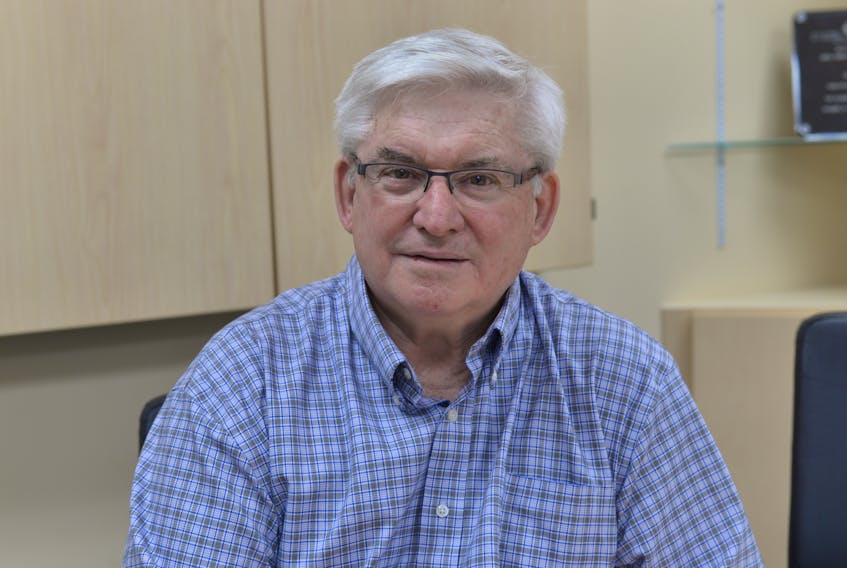CHARLOTTETOWN, P.E.I. - If you’re in debt and collection agencies are calling, there is always hope and a light at the end of the tunnel, said Walter MacKinnon, a Charlottetown-based licensed insolvency trustee.
“Ignoring it doesn’t make it go away. Some people don’t open their mail – that doesn’t make it go away,” MacKinnon said. “And if you don’t deal with it, it owns you 24 hours a day, every day of the week. And it affects every aspect of your life.”
Earlier this month, bankruptcy and insolvency proposal figures for November were released by the Office of the Superintendent of Bankruptcy Canada.
P.E.I. had 35 bankruptcies and 28 insolvency proposals. But for the 12-month period ending Nov. 30, the Island had 416 bankruptcies - a three per cent increase compared to the previous 12-month period - and 299 insolvency proposals, a 5.7 per cent increase.
MacKinnon, also vice-president of MNP Ltd., has been a licensed insolvency trustee since 1985.
He said there is a combination of factors and reasons over a period of time that contributes to debt problems, such as job loss, substance abuse, divorce and health issues.
He has seen more insolvency proposals over the years, as well as more seniors dealing with debt. A couple could have joint debt, and if one dies those debts are passed on to the surviving partner who now has only half the income.
MacKinnon said he’s people don’t seek help soon enough. They leave their debt situation too late, which limits their options. By then, it takes something drastic, such as a person’s wages being garnished or calls from collection agencies for someone to get help.
“Some of these collection agencies are absolutely brutal. Just awful,” he said. “And, yes, the person couldn’t pay their debt and had a responsibility to pay their debt, but it’s not the end of the world.”
“(It) gets them out of the trap that they’re in. That’s a tremendous relief.”
-Walter MacKinnon
MacKinnon said a lot of people get bad information from others who have gone through the bankruptcy or insolvency process before. But he notes that everyone’s situation is different.
Many people don’t know about insolvency proposals and assume that they have to go bankrupt, he said.
Clients are given a “life-changing debt solution.”
“It isn’t any good for you to come to our office with a problem today and give you relief for another month because you’re going to have the same problem a month from now. That’s not going to help you.”
Proposal process
Proposals look at someone’s debt, income and living expenses and come up with a plan. Based on that, a proposal is made for an amount to be paid (a percentage of the debt) every month to creditors.
MacKinnon noted the proposal and monthly payments can be for five years at the most. If a proposal is accepted, payments are made to a trustee like MacKinnon and then to the creditor.
But, if a person misses three payments, perhaps as a result of job loss, then the proposal is dissolved or possibly replaced by an amended proposal.
If the creditors don’t accept the proposed payment terms, the other option is to go bankrupt.
A bankruptcy or a proposal both show up on your credit profile, but if you’re not paying your bills, your credit profile will be affected regardless.
Information about an insolvency proposal is on your credit profile for three years after you finish your obligations.
A first-time bankruptcy is on your credit profile for seven years once the process is finished (usually after about nine months).
Having either on your credit profile doesn’t necessarily mean you can’t get credit from a financial institution, but it does mean you’ll likely have to answer some questions about why you ended up in bankruptcy, and what has changed since.
“(Creditors are) trying to get a feel for what their risk is now,” he said. “Some creditors won’t lend until seven years goes by – that’s just the rule. They all like to see a little bit of distance between when you finish and when you go looking for more credit. You might need a co-signer.”
He said going to a trustee for a solution may feel embarrassing, but it can avoid hardship down the road.
“Most people don’t set out to go bankrupt or file (an insolvency) proposal. Most people are quite proud to be able to have credit and pay their debts and pay on time and they would prefer to do that,” said MacKinnon.
Even so, either process – bankruptcy or insolvency proposal – “gets them out of the trap that they’re in,” MacKinnon said. “That’s a tremendous relief.”
RELATED: P.E.I. bankruptcy numbers went down in November, but up overall for 2018









